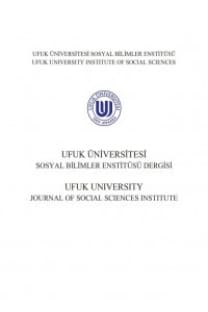Sanal Zorbalık ve Çocuklarımız
Bu makalede batı ülkelerinde ciddi bir sorun olan ve ülkemizde de sorun olmaya başlayan sanal zorbalık konusu ele alınmış; sanal zorbalığın ne olduğu, nedenleri, çocukları nasıl etkilediği ve kimlerin risk altında olduğu incelenerek konuyla ilgili olarak anne- babaların ve okullarda ilgililerin neler yapabileceklerine ilişkin öneriler sunulmuştur
Anahtar Kelimeler:
Sanal zorbalık
CYBERBULLYING AND OUR CHILDREN
In this article, cyberbullying which is a serious problem in Western countries and has recently begun to be a problem in our country is examined. In this framework topics like what cyberbullying is, its causes and how it affects children and finally who is at risk are discussed. Moreover, some suggestions for preventing cyberbullying are offered to both parents and related people at school
Keywords:
Cyberbullying,
___
- Akbulut, Y. (2011), “Cyberbullying and Victimization among Turkish University Students”, Australian Journal of Educational Technology, 27 (7), ss. 645-654.
- Arıcak, O. T., (2009), “Psychiatric Symptomatology as a Predictor of Cyberbullying among University Students”, Eurasian Journal of Educatiobal Research, 34, ss. 167-184.
- Belsey, B., (2011), First Formal Definition of Cyberbullying, www.Cyberbullying.org.
- Corbett, P., (2010), Facebook Demographics and Statistics Report 2010, 145 % growth in 1 Year. http://www.istrategylabs.com/2010/01facebook-demographics-and-statistics-report-2010- 145-growth-in-1-year
- Erdur - Baker, Ö. & Kavşat, F., (2007), “A New Face of Peer Bullying”, Journal of Eurasian Educational Research, 27, ss. 31-42.
- Erdur - Baker, Ö., (2010), “Cyberbullying and its Correlation to Traditional Bullying, Gender and Frequent and Risky Usage of Internet Mediated Communication Tools”, New Media and Society, 12, ss. 109-126.
- Erdur - Baker, Ö. & Tanrıkulu, İ., (2010), “Psychological Consequences of Cyberbullying Experiences among Turkish Secondary School Children”, Procedia Social and Behavioral Sciences, 2, ss. 2771-2776.
- Hinduja, S. & Patchin, J. W., (2006), Cyberbullying: emotional and Psychological consequences. www.cyberbullying.us/cyberbullying emotional consequences.pdf (Accessed May 21, 2012)
- Hinduja, S. & Patchin, J. W., (2007), “Offline Consequences of Online Victimization: School Violence and Delinquency”, Journal of School Violence, 6 (3), ss. 89-112.
- Hinduja, S. & Patchin, J. W., (2009), ”Cyberbullying Research Summary”, Archives of Suicide Research, http://www.cyberbullying.us.
- Kowalski, R. M. & Limber, S. P., (2007), “Electronic Bullying among Middle School Students”. Journal of Adolescents Health, 41, ss. 22-30.
- Li, Q., (2006), “Cyberbullying in Schools: A Research of Gender Differences”, School Psychology International, 27, ss. 157-170.
- Mishna, F., Mclukie, A. & Saini, M., (2009), “Real-World Dangers in an Online Reality: A Qualitative Study Examining Online Relationships and Cyber Abuse”, Social Work Research, 33, ss. 107-118. National Crime Prevention Council. (2011). Ncpc.org.
- Patchin, J. W. & Hinduja, S., (2006), “Bullies Move Beyond the Schoolyard: A Preliminary Look at Cyberbullying”, Youth Violence and Juvenile Justice, 4 (2), ss. 148-169.
- Peter, P., (2010), “Teenage Cyber-bullying and Facebook: Reducing the Risks”, Online Conference on Networks and Communities.
- Solonje, R. & Smith, P. K., (2008), “Cyberbullying: Another Main Type of Bullying?” Scandinavian Journal of Psychology, 49, ss. 147-154.
- Topçu, Ç., Erdur – Baker, Ö. & Çapa - Aydın, Y., (2008), “Examination of Cyberbullying Experiences among Turkish Students from Different School Types”, Cyber Psychology Behavior, 11 (6), ss. 643-648.
- Ybarra, M. L. & Mitchell, K. J., (2004), “Online Agressor / Targets, Agressors and Targets: A Comparison of Associated Youth Characteristics”, Journal of Child Psychology & Psychiatry, 45, ss. 1308-16. Ybarra, M. L., Mitchell, K. J. & Wolak, J. et al., (2006), “Examining Characteristics and Associated Distress Related to Internet Harassment: Findings from the Second Youth Internet Safety Survey”, Pediatrics, 118, ss. 1169-77.
- Yılmaz, H., (2011), Cyberbullying in Turkish Middle Schools: An Exploratory Study, http://www.sagepub.co.uk/journalsPerfissions.nav
- ISSN: 2146-7676
- Başlangıç: 2011
- Yayıncı: Ufuk Üniversitesi
Sayıdaki Diğer Makaleler
Küreselleşme, Ulusal Yenilik Sistemleri ve Çevre İlişkisi
Ülkemizdeki Öğretmenlik Uygulamasına Yeni Bir Yaklaşım
‘İthal Edilmişlik’ Betimlemesi Kıskacında Çeviribilim ve Özerklik Yansıması
Sanal Zorbalık ve Çocuklarımız
‘Cunta’ Korkusundan AB’nin ‘Güvenli’ Limanına Doğru Yunanistan
Amélie Nothomb’un Özyaşamöyküsel Yapıtlarında Farklılığın Benimsenmesi
